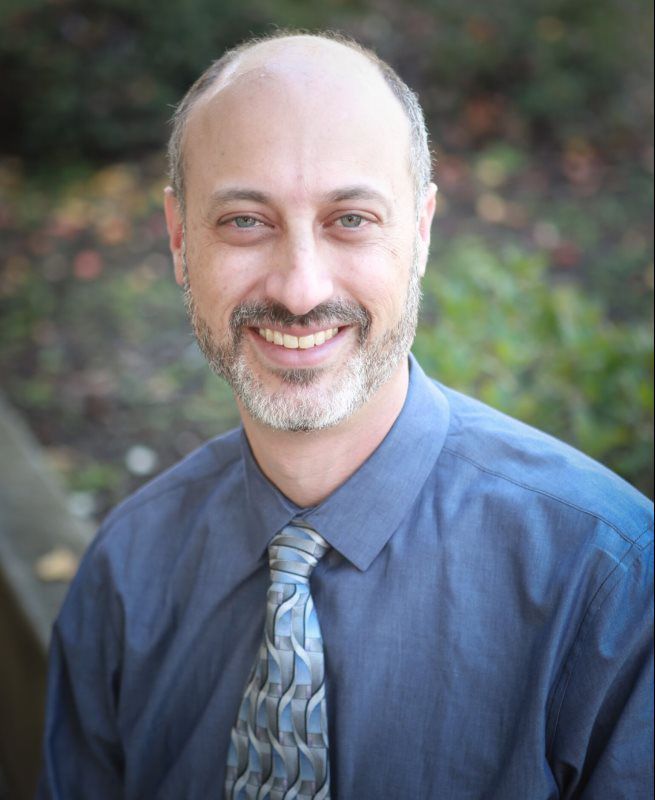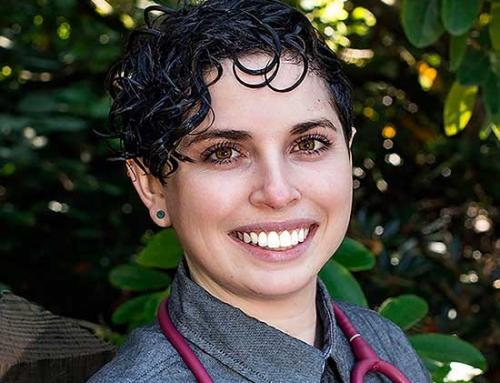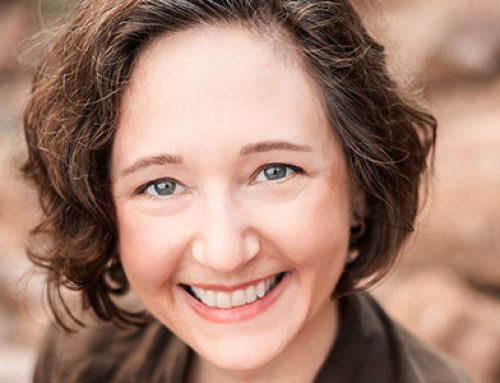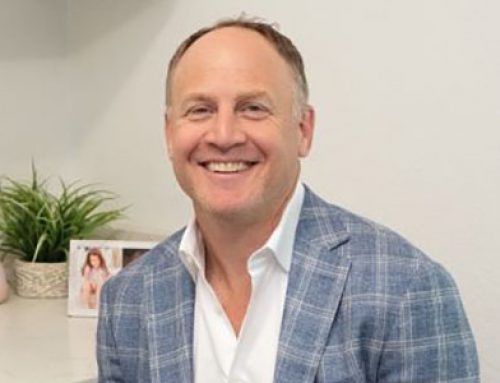
Dr. Cory Tichauer is an ISEAI Full Member and Naturopathic Physician. He is the founder and owner of Bear Creek Naturopathic Clinic, where he uses multi-modality approaches to care for patients with complex chronic illnesses.
What is your primary field of work and where are you located?
I own and operate the Bear Creek Naturopathic Clinic located along the California border in the southern Oregon town of Medford. Our region is a beautiful forested and mountainous region of the country with wild rivers and abundant flora, commonly known as the “State of Jefferson” to locals.
Like many specialty clinics, our patients come from all over, but we primarily serve the wide expanse ranging from Eugene to Sacramento. We also offering remote consultation via HIPAA compliant video conferencing to patients all across the country.
Our clinic employs four extremely experienced Naturopathic Physicians, an acupuncturist, a comprehensive laboratory, an IV suite, Hyperbaric Oxygen Therapy, Bio-Resonance therapy and a full suite of support staff in a centrally located 5,300 sq ft clinic. We pride ourselves in being supportive to the most chemically sensitive patients by having all environmentally sound building products, no WiFi, annual ERMI testing and being fragrance free.
What are your specialties and unique perspectives on environmental health?
My original intent driving my desire to be a physician was to serve the underserved and abandoned patients. Those suffering from chronic, complex illness that conventional providers struggle to characterize and treat; which is why I chose Naturopathic Medicine rather than a standard Allopathic medical school. I like to describe the spectrum of my practice as a Venn diagram comprised of 4 “bubbles” which include chronic infectious illness, immune dysfunction, environmental toxicity and structural and/or neurologic compromise.
My specialties have fluxed through almost two decades in practice, which is to say, I need to constantly keep myself engaged and excited. I have a long-standing vendetta with tick-borne illness and chronic viral infection and continually strive to find newer and more synergistic approaches to assist in the recovery of this patient population. I was trained in Prolotherapy through the Hackett Hemwall Foundation in 2005, and I still offer this treatment along with Neural therapy to address chronic instability, hypermobility and neurologic dysfunction. Having a child who has both EDS and MCAS, I have spent countless hours working out the best practices to stabilize these often co-presenting conditions.
In the past 3 to 4 years, my passion has been in educating, lecturing, and utilizing peptide therapies to address the vast array of issues then fall under the umbrella of neuro-endocrine and immune dysfunction. Of-late, I have been particularly involved in working to correct this later problem by exploring and utilizing vitamin D analogs in a sort of personal version or my interpretation of the Coimbra protocol. This was originally spurred by the need to find a universally effective approach to both minimize the effects of Covid and to allow for recovery of Long-Covid symptoms.
Today, I am also much more focused on the concept of immune regulation and/or “tolerance” as the key issue preventing recovery in chronically ill patients by both hampering their ability to clear infections or toxins as well contributing to the self-perpetuating problem of immune driven inflammation. I have long used both LDA and LDI in this regard, and, as someone who is no stranger to the consequences created from prolonged antibiotic or antimicrobial therapies, I am more focused than ever now on restoration of GI health and the GALT as key interventions for immunomodulation. Whole biome postbiotic therapy, restoration of keystone species, specific nutrients and the use of targeted helminthic therapies have all been critical components in my success.
With all of this in mind, environmental medicine to me represents the ultimate paradigm of “obstacle to cure”. Within my framework of understanding, toxicants are the “obstacles” that sabotage cellular function, stimulate immune inflammation, disrupt neural signaling and impair endocrine and paracrine function in the body. Resolution of infection, restoration of immune balance and stabilization of structure are all dependent on eliminating these toxicants. My philosophy in this regard is that when you have done everything right but not gotten the expected results, one needs to consider what interfering factor is working against you.
“My philosophy in this regard is that when you have done everything right but not gotten the expected results, one needs to consider what interfering factor is working against you.
How did you get into your field of expertise and what led you into the realm of EAI?
As mentioned previously, I have always been drawn to the stimulation, problem solving and, ultimately, gratification involved with treating chronic illness. Just out of medical school, it took a few years of learning humility from my failures to learn how to better individualize patient care and treat more from a vitalistic perspective where the whole always presents as greater than the sum of the parts.
I had the privilege of graduating at a time when I had mentors like Walter Crinion, ND, Paul Anderson, ND, Dietrich Klinghardt, MD, PhD and Virginia Osborne, ND to teach and provide guidance. Chelation and the effects of toxic metals were part of my curriculum as was a base understanding of the effects of glyphosate, herbicides and pesticides on the human body. As such, I have been doing IV and oral chelation protocols since 2004, and I have seen the benefits of this treatment in countless numbers of people.
From this, it was not such a leap to understand fat soluble toxins, mycotoxins and other organo-toxicants as additional sources of impedance in my patients. I attended conferences from Dr. Shoemaker in 2015 and 2016 and embraced the concepts taught by Patricia Kane, PhD on membrane medicine in these same years. I learned a great deal via the American Academy of Environmental Medicine and found camaraderie and learned new concepts in consulting with other like-minded friends and providers including Werner Vosloo, ND, Kelly McCann, MD, Jill Crista, ND, Mark Filidei, DO, Eric Gordon, MD, Ty Vincent, MD and many others.
What are one or two of your biggest EAI “aha” moments?
My first big “aha” moment was when I attended Dr. Kane’s conference on membrane medicine. The science behind lipid rafts, ceramide bridges and “fat soluble toxins” with their propensity to deposit in cellular and mitochondrial membranes, myelin and glandular structures made so much sense. Along with this came an understanding that simply using binders was an inadequate approach to provide effective detoxification. So began my foray into what I call “pushing” (as opposed to “pulling”) or the mobilization of toxins, which involves a phospholipid exchange, cleaning the ECM, maintaining lymphathic and glymphatic flow and promoting bile release through the use of cholagogues. This “shift” in my treatment paradigm not only reduced the duration of therapy but also improved overall outcomes by restoring membrane health/fluidity, mitochondrial function and neuroendocrine wellness.
My second big shift came when I attended lectures from Ty Vincent, MD on Low Dose Immunotherapy and Butch Schrader, MD on Low Dose Allergy Therapy. The concept of a dysfunctional immune response was not so new and actually highlights the basic tenants of CIRS, but the notion that a loss of immune “tolerance” was behind the ongoing hypersensitivities in many patients was a relatively new idea that made so much sense. The addition of LDI/LDA and later whole biome restoration, helminth therapy and other immune regulating therapies has allowed me to work with patients to not only ensure they have eliminated their toxins but to also restore immunologic barriers and regain tolerance to their environments. I see this paradigm as key in allowing patients to function normally in life again by giving them back the ability to travel, resolve their food, inhalant and chemical sensitivities and eliminate the fear of suffering some unpredictable setback in their health from a random exposure to mold or other toxin.
“I see this paradigm as key in allowing patients to function normally in life again by giving them back the ability to travel, resolve their food, inhalant and chemical sensitivities and eliminate the fear of suffering some unpredictable setback in their health from a random exposure to mold or other toxin.
What would you like the public and other ISEAI members to know?
We only know what we know, and we know more now than we did 20 years ago and 10 years ago and 5 years ago because patients and providers have refused to accept dysfunction and settle for the acquiescence of partial outcomes. Don’t give up and always keep seeking answers. EAI exists on a spectrum that is unique to each individual, so a “one size fits all” approach to treatment rarely works to provide full resolution for a suffering individual. Build trust with the person you are treating, don’t be afraid to admit when you don’t know an answer and avoid repeating the same treatment approaches when they didn’t work the first time!
“Don’t give up and always keep seeking answers. EAI exists on a spectrum that is unique to each individual, so a “one size fits all” approach to treatment rarely works to provide full resolution for a suffering individual.
On a final clinical note, I would emphasize that in order to detox properly, one needs to look beyond detoxification! Limbic system patterns, neuroendocrine dysfunction and persistent immune based patterns of inflammation all contribute to the cyclical nature of the problem and, therefore, all of these issues need to be addressed if one hopes to restore health and balance.
Get in touch:
Bear Creek Naturopathic Clinic
Phone: 541-770-5563
Website: Bear Creek Clinic
Email: drcory@bearcreekclinic.com
*Remote consultations available.






Leave A Comment